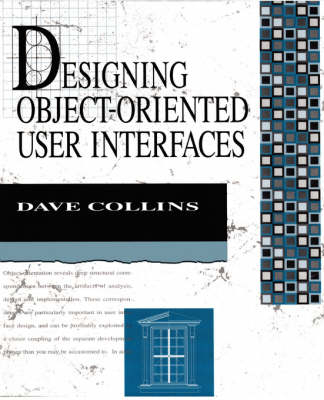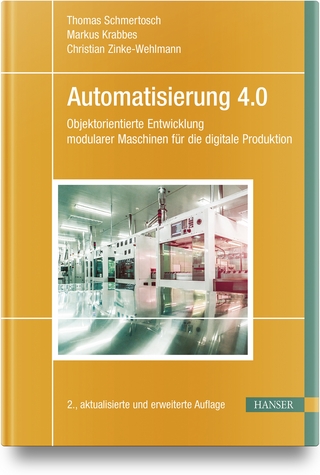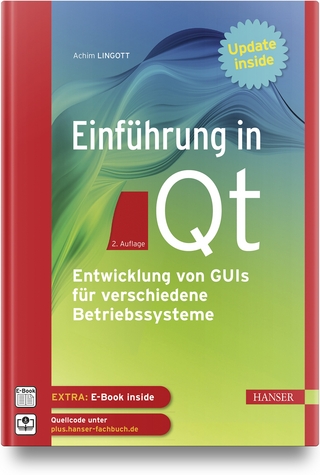
Designing Object-Oriented User Interfaces
Benjamin-Cummings Publishing Company, Subs of Addison Wesley Longman, Inc (Verlag)
978-0-8053-5350-1 (ISBN)
- Titel ist leider vergriffen;
keine Neuauflage - Artikel merken
Collins presents a principled approach to designing user interfaces for systems built on modern hardware and software platforms. In the text, Collins defines object-oriented user interface, presents a methodology for designing both the visible features of the interface and the software structures underlying it, and demonstrates how this methodology fits into the context of object-oriented development. Collins provides the reader with a single conceptual model, grounded in standard engineering practice, to guide both external and internal design of the user interface. The author's methodology, based on object-oriented principles, is consistent with other object-oriented methodologies for system and database design.*
Delivers a clear definition of "object-oriented" user interface consistent with other OO paradigms and contexts *Draws on many diverse fields such as software engineering, cognitive psychology, human factors, and graphic design *Covers the design of the visible interface and the software that implements it *Describes object-oriented implementation architectures which flow naturally from the user interface *Provides examples in C++ and Smalltalk to illustrate the implementation of object-oriented user interfaces 080535350XB04062001
1. Introduction.
The User Interface.
Plan of the Book.
Audiences for the Book.
Relation to Other Design Approaches.
I. FOUNDATIONS.
2. A Bit of History.
People, Work or Technological Change.
Knowledge Workers and Production Workers.
Evolution of the User Interface.
User Interface Technology - Yesterday, Today, Tomorrow.
3. Two User Interface Styles.
Analyzing User Interfaces.
The Interfaces.
Discussion.
4. Applying Object-Orientation To User Interfaces.
A Model of Object-Orientation.
Cognitive Models for Object-Orientation.
Object Orientation in User Interfaces.
5. Three Domains of Oo Design For The User Interface.
Designing for Understandability.
The Three Domains.
An Example: "Klondike" Solitaire.
6. Ooui Design: Process and Team.
Models of the Development Process.
The OOUI Design Process.
Skills Required for OOUI Design.
Role of the UI Design Team in Development.
Managing the OOUI Design Process.
II. EXTERNAL DESIGN.
7. Users, Tasks, and Task Analysis.
Why Task Analysis?
Users and Their Tasks.
Task Analysis and Task Synthesis.
Documenting Task Analysis.
Tasks as Objects.
8. The User's Conceptual Model.
Models and Metaphors.
Users' Models of Systems.
Designing the User's Conceptual Model.
A Catalog of Metaphors.
9. Information Presentation.
Human Senses, Information, and Technology.
Views, Presentation Metaphors, and Patterns.
Step-by-Step Presentation Design.
Content View Design.
Icon Design.
Non-Visual Information.
Differences Between Computers and Other Media.
10. Interaction and Control.
Mechanisms.
Interactivity.
Interaction Devices.
Step-by-Step Interaction Design.
Style Guides.
Documenting Look and Feel.
III. INTERNAL DESIGN AND IMPLEMENTATION.
11. Object-Oriented System Architectures.
An OO View of Systems and Applications.
Reactive Systems.
The Model-View-Controller Architecture.
An Architecture for Object-Oriented Client-Server.
Applications.
12. Information Models.
"Middle Out" User Interface Design.
Modular Separation of Information Models and Interaction.
A "Three-Schema" Approach to User Interfaces.
13. Presentation and Interaction Objects.
Views and Interactors.
Design and Code Reuse.
Direct Manipulation Interaction.
Object Handlers.
14. Tools For Prototyping and Implementation.
Implementation Languages.
Toolkits.
Visual Interface Builders.
Application Frameworks.
Portability.
15. Putting it All Together.
The Whole Interface.
Case Study: Online News Photos, With and Without Seams.
Case Study: A Distributed Multimedia System.
Case Study: Adding Fax to an Office System.
Pragmatic issues of OOUI Implementation.
16. Summary and Directions.
Key Points of the Book.
The Future of the OOUI.
Where to Go From Here.
Appendix 1. Fax Case Study.
Appendix 2. Introduction to Object-Orientation.
Appendix 3. Resources. 0201704544T06252001
| Erscheint lt. Verlag | 13.2.1995 |
|---|---|
| Verlagsort | San Francisco |
| Sprache | englisch |
| Maße | 234 x 187 mm |
| Gewicht | 905 g |
| Themenwelt | Mathematik / Informatik ► Informatik ► Betriebssysteme / Server |
| Mathematik / Informatik ► Informatik ► Netzwerke | |
| Informatik ► Software Entwicklung ► Objektorientierung | |
| ISBN-10 | 0-8053-5350-X / 080535350X |
| ISBN-13 | 978-0-8053-5350-1 / 9780805353501 |
| Zustand | Neuware |
| Informationen gemäß Produktsicherheitsverordnung (GPSR) | |
| Haben Sie eine Frage zum Produkt? |
aus dem Bereich


